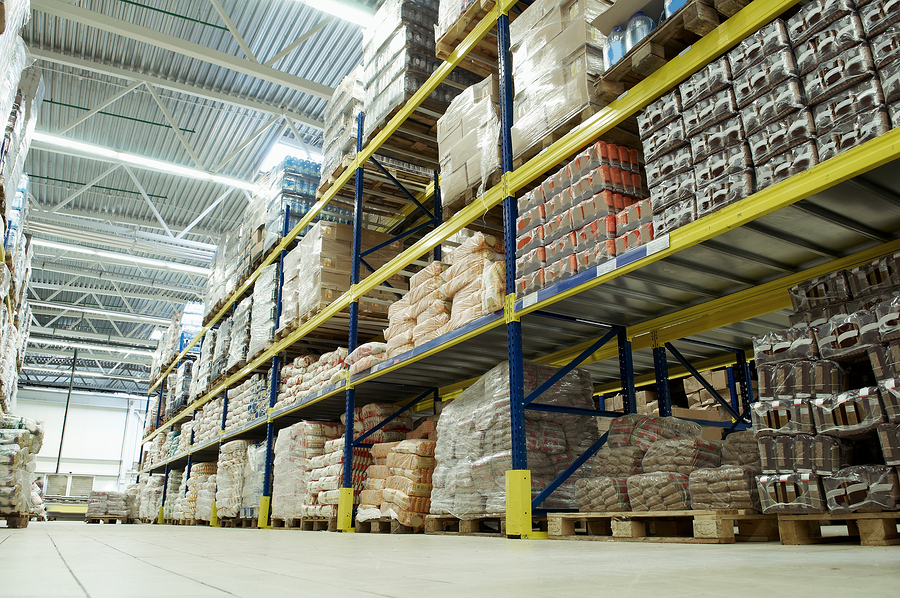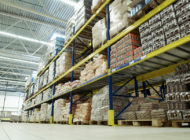Protecting the integrity and safety of your food products is not only your responsibility as a manufacturer or shipper, but also the responsibility of every logistics provider that touches the product throughout the supply chain. In this article, we’ll take a look at the warehousing part of the food product supply chain and share some of the ways that 3PL providers can protect food safety in the warehouse.
5 Ways That 3PL Providers Protect Food Safety in the Warehouse
 Starting with the basics, all logistics providers that handle food products must understand and comply with the Food Safety Modernization Act (FSMA). As part of the FSMA, makers of food products must create a Food Safety Plan that seeks to minimize the risk of food contamination. According to the FDA, the Plan must include a hazard analysis, preventive controls to address potential problems, and a plan for oversight and management of preventive controls.
Starting with the basics, all logistics providers that handle food products must understand and comply with the Food Safety Modernization Act (FSMA). As part of the FSMA, makers of food products must create a Food Safety Plan that seeks to minimize the risk of food contamination. According to the FDA, the Plan must include a hazard analysis, preventive controls to address potential problems, and a plan for oversight and management of preventive controls.
But there is much more that your 3PL can do to protect your food products and preserve their integrity. The following are 5 of the most important.
1. 3PLs can provide lot control for food and pharmaceutical products. Items that have common characteristics important to the manufacturer (e.g., the same expiration date) are given a lot number by the manufacturer and/or by a 3PL’s warehouse management systemas they are received by the warehouse. This lot number allows 3PLs to quickly identify batches of items in the event of a recall. It also enables the 3PL to perform inventory management protocols like FIFO (first in first out; the oldest lots of items will be distributed first) and FEFO (first expired first out; the products closest to their expiration dates will be distributed first).
2. 3PLs can perform recalls as well as mock recalls. Recalls are a crucial part of the modern food supply chain. According to the USA Today, “The U.S. is on track to issue a record number of recalls this year, with more than 1 billion announced in just the first seven months of the year” (2022). Food product recalls account for a sizeable portion of these.
As such, you’ll want to make sure that any 3PL provider to whom you entrust your products can safely identify and separate recalled items. Many 3PLs even handle ‘mock recalls’ on a regular basis to prepare their systems and staff should the real thing occur.
Whether mock or real, the recall process typically flows like this.
- Items are flagged by the 3PL’s warehouse management system (WMS) which assigns the products a segregated hold location and prevents them from being distributed.
- Warehousing personnel are notified.
- ‘Recalled’ items are taken from the main warehouse floor and placed in the segregated hold location.
- The WMS is updated as the products enter the hold location, all warehouse staff is notified of the location, and appropriate signage is displayed.
- The customer is updated and the 3PL provider awaits further direction (e.g., whether to hold, arrange destruction of items, etc.).
3. Some 3PLs can handle temperature- and climate-controlled storage. A warehouse that has temperature-controlled space utilizes cooling (and/or heating) units to keep the temperature within a set range. These units are strategically placed throughout the space to ensure that the area stays in range.
The most common warehouse temperature ranges are:
- Ambient. Refers to the natural temperature of the warehouse.
- Air conditioned. Typically refers to a temperature between 56°F and 75°F. Confectionery products are a good example of a product that must avoid hot and cold extremes.
- Refrigerated. Typically refers to a temperature between 33°F and 55°F.
- Cold/Frozen. Typically refers to a temperature at or below 32°F.
With climate-controlled storage, the humidity of the space is regulated in addition to temperature. Commercial humidifiers/de-humidifiers are used along with other equipment to ensure that humidity stays within required ranges for products.
4. 3PLs can prevent cross contamination in the warehouse. Cross-contamination-prevention measures in the food-grade warehouse include:
- Separation of materials. Products in the food warehouse must be separated – and kept separate – from each other. This includes movement of products through unauthorized areas.
- Education of associates. Warehouse staff must be adequately trained to recognize the potential allergens at the facility, the opportunities for cross contact, and the policies and procedures in effect at the facility.
- Designation of facility sections. Areas of the warehouse containing sensitive items must be clearly identified; unapproved equipment and unauthorized personnel must be prevented from entering each given section.
- Sanitation efforts. Associates must wash hands with soap and water after handling any food or pharma product. Appropriate clothing must be worn and changed or cleaned as needed. Equipment and storage areas must be maintained and cleaned in accordance with facility and/or regulatory requirements.
- Designation of supplies. Supplies such as stretchwrap and pallets can be designated for a specific product type and their use will be solely limited to that product type.
- Quarantine of rejected items. Rejected food items must be appropriately identified and quarantined in order to prevent their use. Similarly, incomplete or incorrect packaging for any item should result in removal of that product from the product pool until it can be repackaged or discarded.
5. Some 3PLs can provide inspection and sampling services. Food logistics companies like Kanban that are registered with the FDA will enable FDA representatives to inspect your products at their warehouses. Some 3PLs are also able to provide product samples to your quality control team.
At Kanban Logistics, the way that sampling works is as follows. We have customers with nearby manufacturing plants that have trained our team members on their sample-collecting processes. When containers of these products come in and are unloaded, our team members collect the samples and deliver them to the nearby production facility. Their quality control team then tests to ensure that the product is fit for distribution. If it is, our distribution services will proceed as normal. If it’s not, we can quarantine and/or destroy (with certification) the product lots in question.
By having a food logistics company trained in its sampling methods, the manufacturer can avoid timely steps in sending representatives out to us.
Rely on Kanban Logistics for food safety in the warehouse
At Kanban, we operate in strict compliance with Food Safety Plans and regulations from the FDA and other agencies. We meet all requirements of ISO:9001:2015 quality standards. We also have a superior rating from AIB International. Such certifications mean that we not only talk the talk when it comes to food safety in the warehouse, we walk the walk in the eyes of some of the most stringent auditors in the business.
To learn more about how we can put this care and expertise to work for your food supply chain, contact Kanban Logistics today.



